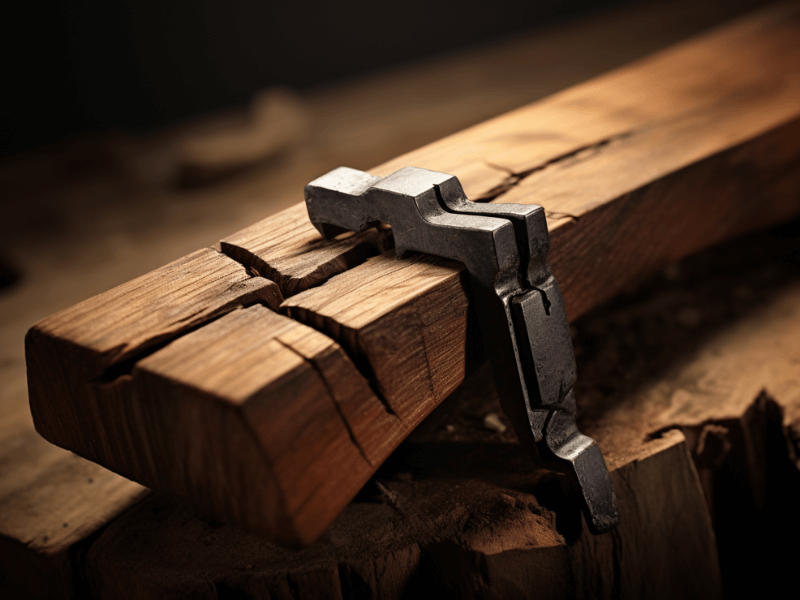There’s an undeniably sweet satisfaction in joining two pieces of wood together, waiting for the glue to dry, and seeing a bond as strong as if the wood grew that way naturally. But to achieve this, we have to master one essential woodworking skill: clamping wood glue.
In this article, we will journey through the process of effectively clamping wood glue and the crucial role it plays in the integrity of your woodworking projects.
Overview: The Clampdown Chronicle
- The necessity and benefits of clamping wood glue
- Various types of wood and wood glue
- Clamping times for different scenarios
- Considerations like wood type, glue type, moisture, and other factors

The Mighty Clamp: Why Clamping Wood Glue is Essential
In woodworking, patience isn’t just a virtue; it’s an absolute requirement. When you apply wood glue, clamping it doesn’t merely hold it in place as it dries. It applies pressure, forcing the glue into the wood’s pores, creating a stronger bond.
It also ensures an even distribution of adhesive, preventing weak spots in your joinery. Without the right clamping pressure and time, your joint could fail, rendering all your hard work for naught.
Glue and Wood Symphony: Understanding Different Clamping Times
- Polyvinyl Acetate (PVA) Glue and Hardwood: PVA glues, like Titebond, are ideal for hardwoods like oak, maple, and walnut. Clamping time is usually around 15-30 minutes with a full cure in 24 hours. Moisture in the wood can increase the clamping time.
- PVA Glue and Softwood: Softwoods like pine, fir, or spruce absorb PVA glue quicker. Clamping time can be as short as 15 minutes, with a 24-hour full cure time.
- Cyanoacrylate (CA) Glue: Super glues, or CA glues, work on various wood types. Clamping time is incredibly short, around 30 seconds to 1 minute, but humidity can accelerate curing.
- Epoxy Resins: These work on both hard and softwoods. Clamping time varies based on the specific product but generally falls between 30 minutes to 1 hour, with full cure times around 24 hours.
- Polyurethane Glue: Suitable for all wood types, polyurethane glue requires a longer clamping time of around 1-2 hours, with a full cure in 24 hours. It also needs a slightly damp surface to cure properly.
Conclusion: Squeeze, Hold, Release – Mastering the Clamping Technique
Clamping wood glue is more than just an exercise of patience; it’s a critical step in creating strong, durable wood joints. Knowing how long to clamp depends on the type of wood, the glue you’re using, and environmental factors like moisture.
By understanding these parameters and applying them to your work, you can ensure the integrity of your projects, creating pieces that not only look good but stand the test of time.


